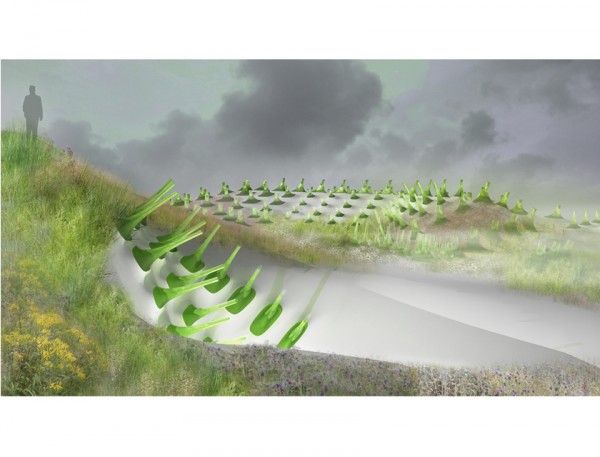
This speculative proposal by SERVO
for a 4,000 sqm bioscience innovation center with a hydrodynamic
vegetated roof, located in the Albano region of Stockholm, reconsiders
the extensive green roof typology to produce an occupiable roofscape
characterized by immersive depth. The green roof is designed to be
experienced from several vantage points: from above—walking amidst a
dense landscape of indigenous vegetation intertwined with protuberant
forms that emit water, air or light; from below—as a suspended ceiling
system that pulls down to close proximity with the floor; or from
within—in the interior of the auditorium space and specialized
laboratory areas designed for the cultivation of vegetation in semi
climatically-controlled microclimates.
The Hydrophile derives its name in part from the hydrodynamic
properties found in the shell of the Namib Desert beetle. A coalescence
between formal and material performance occurs at a micro scale in the
shell of the beetle where hydrophilic—water attracting—and
hydrophobic—water repelling—regions are interspersed to collect and
direct the flow of water. In the Hydrophile prototype, this principle is
applied on an architectural scale for the design of a hydrodynamic
green roof system. The primary performative aspect of the Hydrophile is
the cultivation of biotopes on and through a variegated roofscape
augmented with systems for percolating water through soil substrates.
The material properties of ceramics with varying degrees of porosity and
surface treatments are coupled with a morphology of protuberant forms
in order to perform as hydrophilic and hydrophobic agents. The
protuberant morphology of the roofscape directs the flow of water to
irrigate organic matter—dirt. The main driving factors for the design of
the Hydrophile building and its plant communities are the substrate
thicknesses, substrate design, and the roof topography and geometry. The
roof topography is used to direct water to depressions where large
amounts can be stored to support wet meadows or fens. Substrate
thickness is used to create vegetational gradients ranging from
shrublands and meadows on thicker substrates, to dry meadows and
heathland on thin substrate layers. The roofscape is incorporated into a
system of urban green surfaces that provide important links for the
migration of species, possibly supporting existing biotope structures
and habitat networks and promoting biodiversity in the local
environment.
via suckerPUNCH
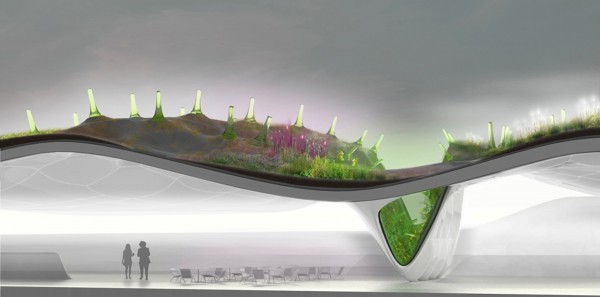
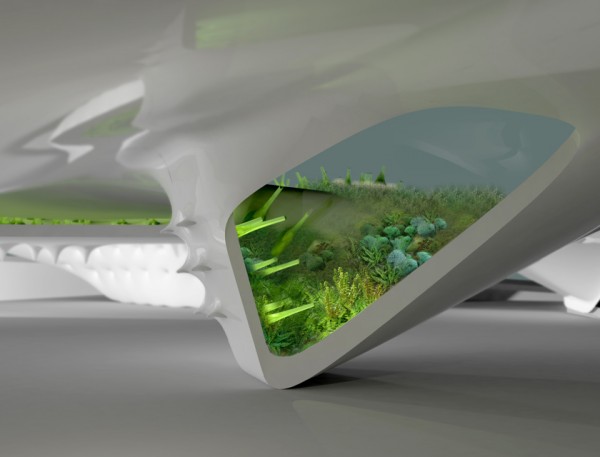
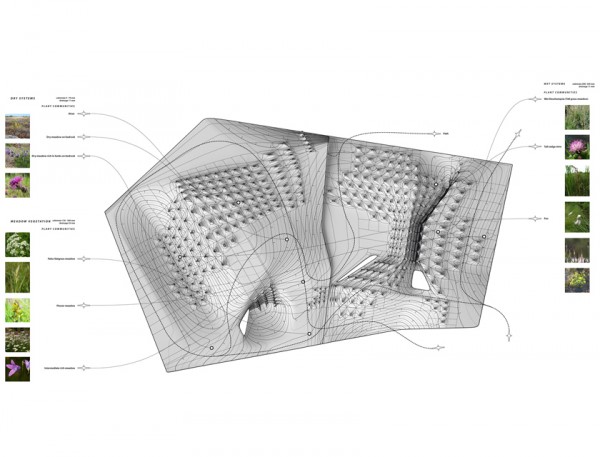
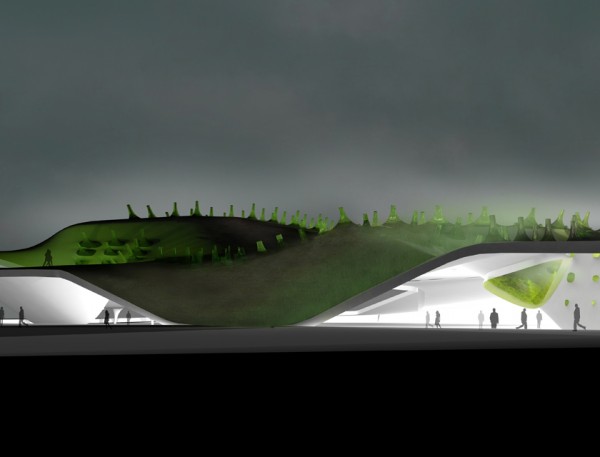
Источник: http://www.evolo.us/architecture/bioscience-innovation-center-with-a-hydrodynamic-vegetated-roof-servo/ | 
